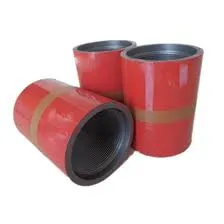- Afrikaans
- Albanian
- Amharic
- Arabic
- Armenian
- Azerbaijani
- Basque
- Belarusian
- Bengali
- Bosnian
- Bulgarian
- Catalan
- Cebuano
- Corsican
- Croatian
- Czech
- Danish
- Dutch
- English
- Esperanto
- Estonian
- Finnish
- French
- Frisian
- Galician
- Georgian
- German
- Greek
- Gujarati
- Haitian Creole
- hausa
- hawaiian
- Hebrew
- Hindi
- Miao
- Hungarian
- Icelandic
- igbo
- Indonesian
- irish
- Italian
- Japanese
- Javanese
- Kannada
- kazakh
- Khmer
- Rwandese
- Korean
- Kurdish
- Kyrgyz
- Lao
- Latin
- Latvian
- Lithuanian
- Luxembourgish
- Macedonian
- Malgashi
- Malay
- Malayalam
- Maltese
- Maori
- Marathi
- Mongolian
- Myanmar
- Nepali
- Norwegian
- Norwegian
- Occitan
- Pashto
- Persian
- Polish
- Portuguese
- Punjabi
- Romanian
- Russian
- Samoan
- Scottish Gaelic
- Serbian
- Sesotho
- Shona
- Sindhi
- Sinhala
- Slovak
- Slovenian
- Somali
- Spanish
- Sundanese
- Swahili
- Swedish
- Tagalog
- Tajik
- Tamil
- Tatar
- Telugu
- Thai
- Turkish
- Turkmen
- Ukrainian
- Urdu
- Uighur
- Uzbek
- Vietnamese
- Welsh
- Bantu
- Yiddish
- Yoruba
- Zulu
tubing crossover
Understanding Tubing Crossovers in Oil and Gas Operations
In the oil and gas industry, efficient and effective extraction of resources from underground reservoirs is paramount. One critical component of this process is the tubing system, which plays a vital role in transporting fluids from the wellbore to the surface. However, in certain operational contexts, companies encounter the need to transition between different types of tubing systems or adapt to varying conditions—this scenario is where tubing crossovers come into play.
A tubing crossover is a fitting or connector that allows for the seamless transition between different tubing sizes or types within a drilling or production operation. These crossovers serve several essential purposes they accommodate changes in well design, adapt to various fluid characteristics, withstand different pressure ratings, and facilitate equipment upgrades or modifications.
The Importance of Tubing Crossovers
In oil and gas extraction, wells often have unique configurations due to the geological characteristics of the reservoir, the desired production rate, and the equipment available at the site. As these factors change, operators may need a crossover to ensure that the tubing system continues to function optimally. For example, a well might require a change from a smaller diameter tubing to a larger diameter to cope with an increase in production volume. A properly designed tubing crossover will minimize the risk of flow restrictions, which can lead to decreased production efficiency or even costly downtime.
Another critical aspect of tubing crossovers is their role in maintaining the integrity and safety of the entire system. In high-pressure environments, using the correct crossover that matches the pressure ratings of both connected tubes is essential to prevent leaks or catastrophic failures. The material used in these connectors also plays an important role; typically, they are made from high-strength steel or other durable materials to ensure they can withstand harsh operational conditions.
Types of Tubing Crossovers
There are various types of tubing crossovers, each designed for specific applications and operating conditions. Some common types include
tubing crossover

1. Threaded Crossovers These are designed with male and female threaded ends that allow for a secure mechanical connection between two pieces of tubing. Threaded crossovers are prevalent in situations where ease of assembly and disassembly is necessary.
2. Flanged Crossovers Flanges provide a flat surface for connecting two tubes, typically secured with bolts. This type of crossover is advantageous in high-pressure applications, as the larger surface area helps distribute stress.
3. Welded Crossovers For applications requiring high strength and durability, welded crossovers can be used. In this case, the tubing and crossover are permanently joined through welding, ensuring a robust connection that is less susceptible to failure.
Challenges and Considerations
While tubing crossovers offer numerous benefits, they also come with challenges. Precision in engineering is necessary to ensure that the crossover fits perfectly and meets the operational requirements without introducing any weaknesses. Additionally, maintaining the integrity of crossovers during production or repair activities requires careful monitoring and inspection.
Another factor to consider is the cost associated with using specialized tubing crossovers. Depending on the materials, design, and customization needs, the expenses can add up quickly. Operators must weigh these costs against the potential benefits to determine the most effective approach to their tubing needs.
Conclusion
Tubing crossovers are a vital component in the smoothly operating machinery of oil and gas extraction. Understanding their importance, types, and the potential challenges they pose is crucial for operators to optimize their production systems. As technology and engineering continue to advance, the functionality and reliability of tubing crossovers will evolve, further supporting the efficient extraction of resources and ensuring that safety standards are upheld. In a constantly changing environment, the need for adaptable and durable tubing solutions is more significant than ever, and tubing crossovers will undoubtedly remain a key element in the industry’s ongoing efforts to improve performance and reduce operational risks.
-
Tubing Pup Joints: Essential Components for Oil and Gas OperationsNewsJul.10,2025
-
Pup Joints: Essential Components for Reliable Drilling OperationsNewsJul.10,2025
-
Pipe Couplings: Connecting Your World EfficientlyNewsJul.10,2025
-
Mastering Oilfield Operations with Quality Tubing and CasingNewsJul.10,2025
-
High-Quality Casing Couplings for Every NeedNewsJul.10,2025
-
Boost Your Drilling Efficiency with Premium Crossover Tools & Seating NipplesNewsJul.10,2025







